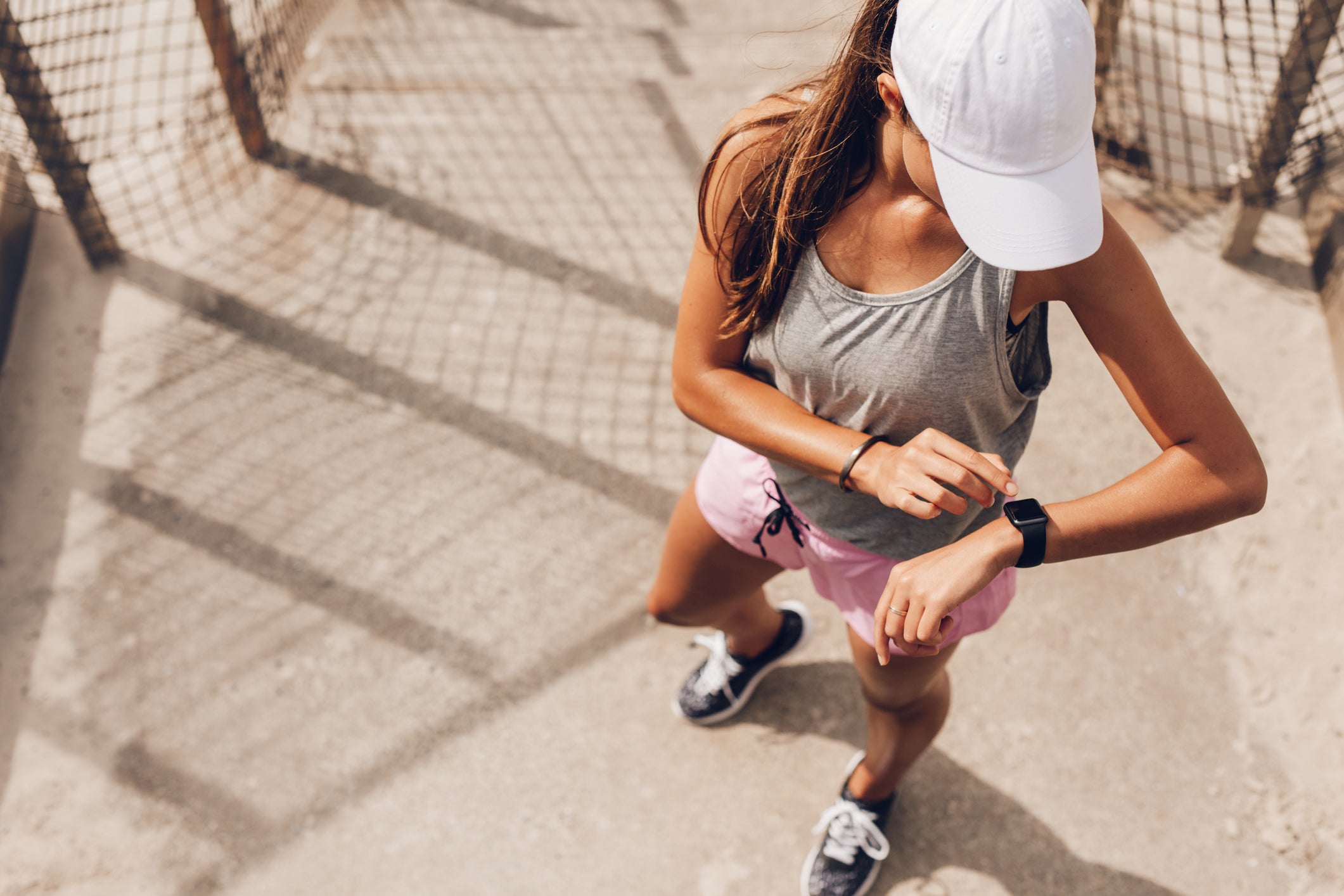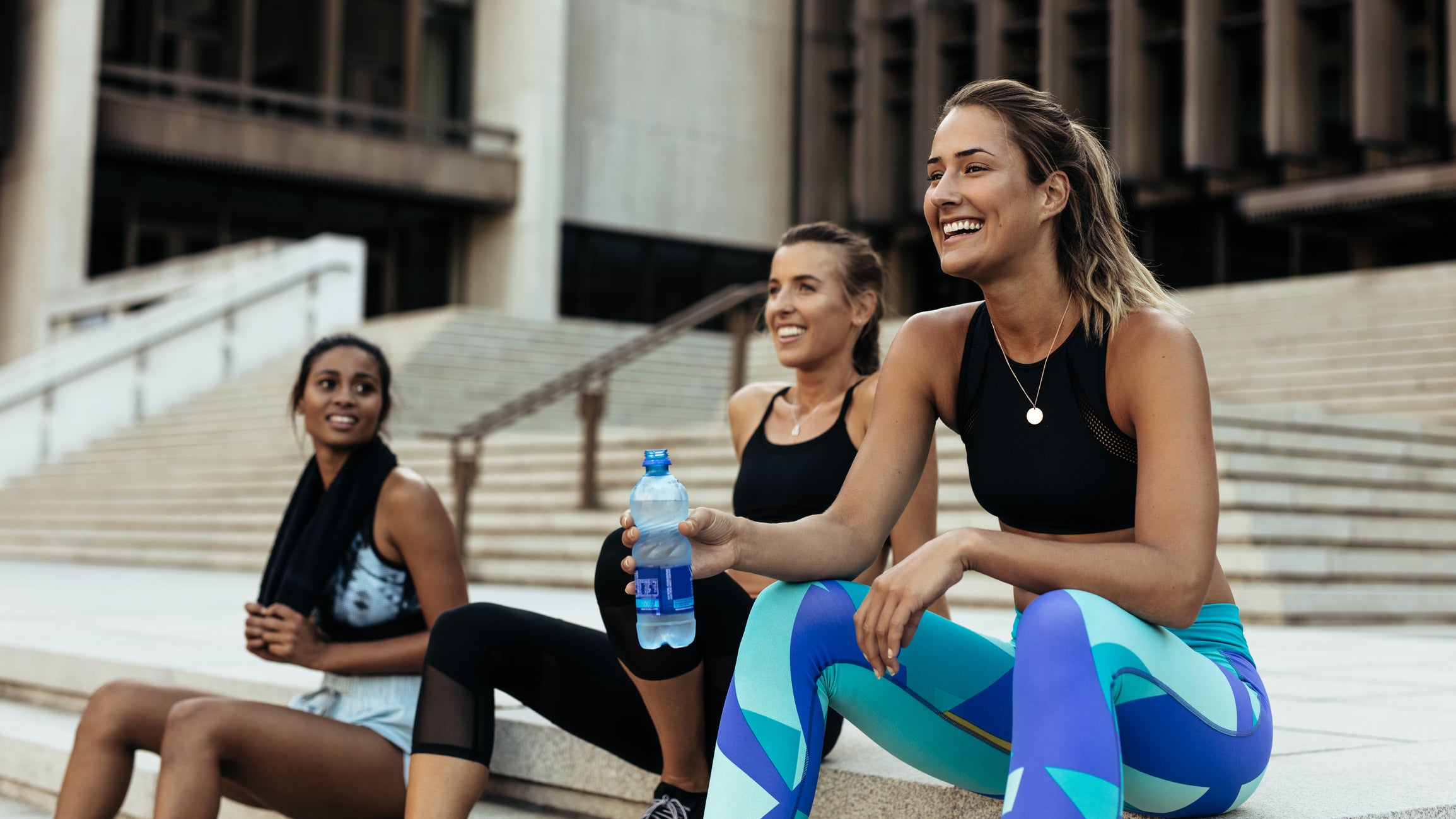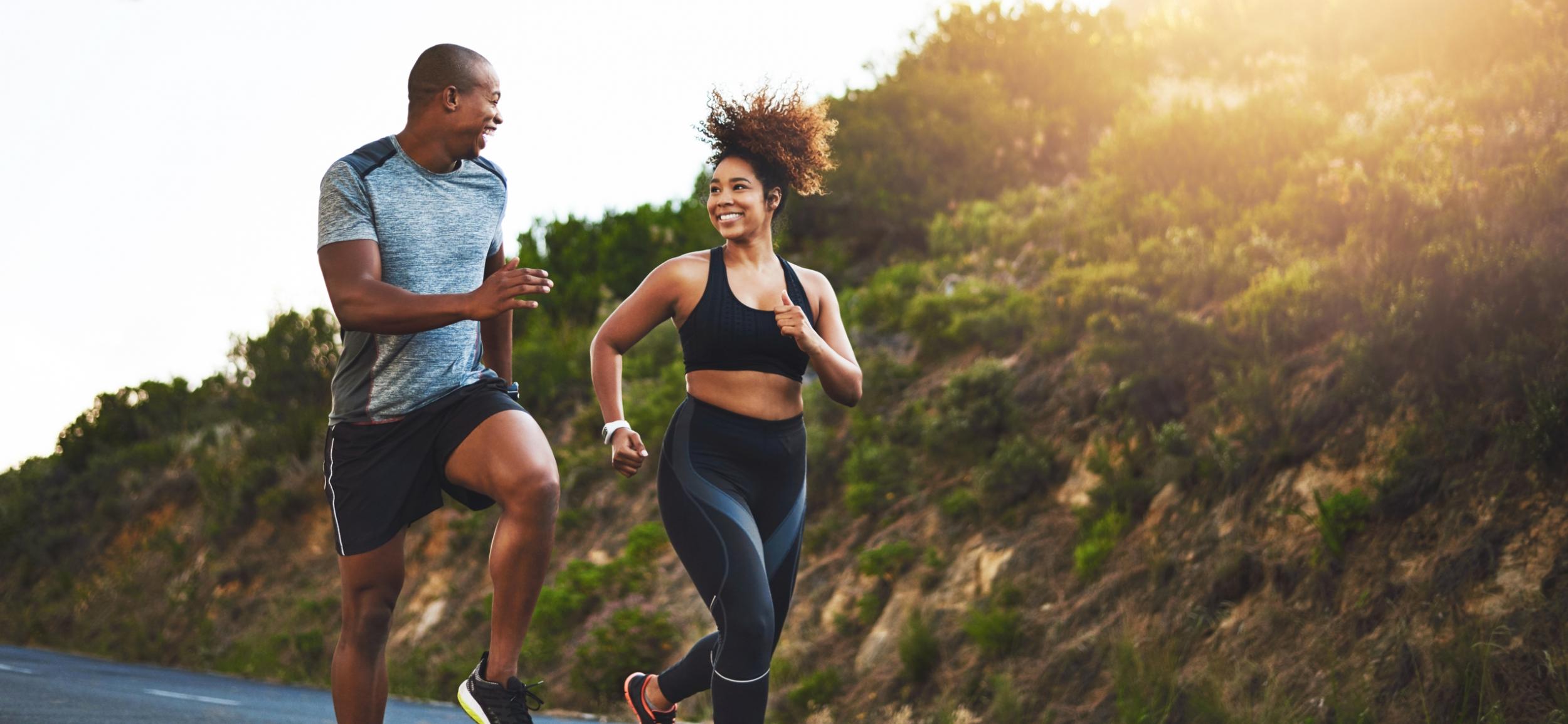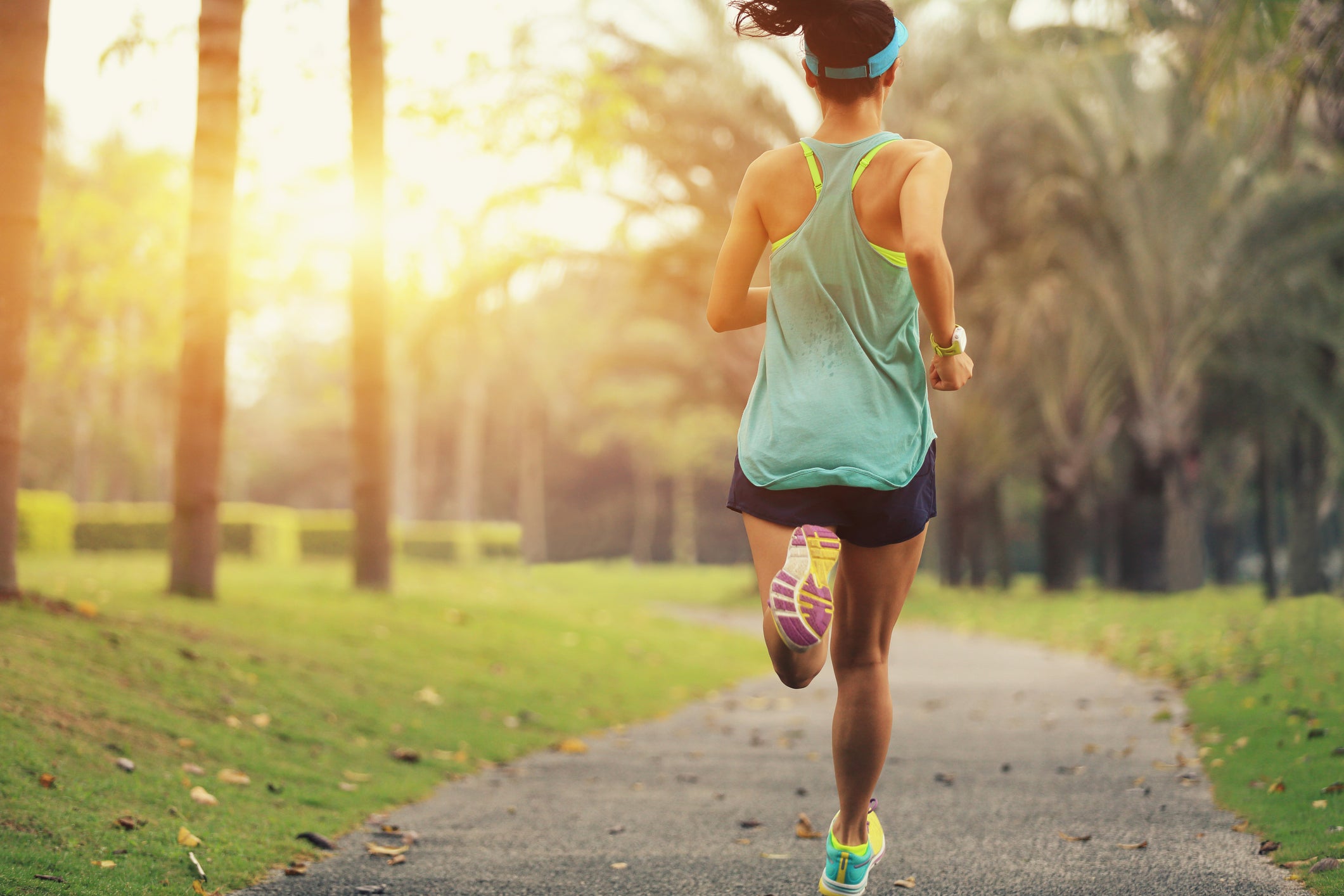9 tips for running in the summer, from keeping hydrated to what to wear
‘Wear lightweight clothing made from synthetic fabrics’


Your support helps us to tell the story
From reproductive rights to climate change to Big Tech, The Independent is on the ground when the story is developing. Whether it's investigating the financials of Elon Musk's pro-Trump PAC or producing our latest documentary, 'The A Word', which shines a light on the American women fighting for reproductive rights, we know how important it is to parse out the facts from the messaging.
At such a critical moment in US history, we need reporters on the ground. Your donation allows us to keep sending journalists to speak to both sides of the story.
The Independent is trusted by Americans across the entire political spectrum. And unlike many other quality news outlets, we choose not to lock Americans out of our reporting and analysis with paywalls. We believe quality journalism should be available to everyone, paid for by those who can afford it.
Your support makes all the difference.Nothing quite beats summer running; clear blue skies, warm temperatures, long days, and hedgerows abundant with wildlife and flowers.
The psychological benefits of running are even more heightened when the weather and our surroundings make us feel so good.
But when the mercury starts edging higher, it’s important not to get too hot-headed and to hit the trails without some preparations - this is essential, not only from a performance perspective, but also for the sheer enjoyment of the activity.
Sports nutritionist Liam Holmes tells The Independent: “Just a five per cent drop in hydration can result in a 20 per cent drop in performance”, particularly hitting home the point.
Therefore, it is well worth considering the following suggestions before putting on your trainers and heading out for your summer run.
Here's our list of top tips you need to know before hitting the road this summer:
1) Hydration
You’re going to be sweating a lot more than usual, so up your fluid intake before, during and after running, as dehydration will result in performance drop off, slower recovery, as well as possibly headaches and/or cramps. But, the answer isn’t to simply drink more and more water, indeed over consumption can dilute your body’s sodium concentration and lead to hyponatremia (aka water overload) in more extreme instances.
Instead, try to replace both lost water and salts in a balanced way, the quantities of which vary from person to person. By drinking the right amount of water and salts (add an electrolyte powder into your water bottle), or popping some gels in your pocket - this will keep you at peak performance.
Holmes notes: “Try to space your fluid intake out over the course of your training, as opposed to taking large quantities at once.”

2) Acclimatization
When the hot weather first arrives, don’t be tempted to push yourself too much. Take it easy, then - over the next couple of weeks - your body will adapt and your threshold to perform in hotter temperatures will increase with it.
3) Clothing
Wear lightweight clothing made from synthetic fabrics, these will help wick sweat away from your body keeping you cooler. If it’s likely to be sunny, SPF rated fabrics - which are quite commonplace now in running sportswear - are a great option (particularly so if you’re a little lazier on the suncream application front).
4) Accessories
A light mesh cap will help keep the sun off your face as well as helping with cooling, and sunglasses are a must too.
Hydration packs - or vests - are very popular in the running community, and for good reason. They can weigh as little as 90 grams, yet with a bladder and soft water bottles you can carry around 2L of water, plus items like your phone, sun cream etc - so you can head out for hours at a time whilst being totally self sufficient.

5) Suncream
Apply sun protection on all exposed skin, particularly those sensitive areas that see less of the sun, such as the backs of your knees or neck. UV levels are high in the summer so use SPF30 as a minimum, and consider trying out one of the brilliant single application sun creams if you know you’re a bit lazy on this front - they’ll protect you for up to 10 hours without the need to re-apply.
6) Shaded Routes
If your regular route doesn’t offer much shade and it’s a sunny day, choose a route that will take you through trees, woodland or along hedgerows - these offer a cooler alternative to a sun drenched path.

7) Exertion Levels
The old adage of listening to your body has never been truer when running on a hot summer’s day. Factors such as your core temperature rising too high, dehydration and loss of salts are very much in the mix, and once you’ve overdone it, it’s hard to get going again. So lower your usual pace, even consider dropping down to a speedy walk for a couple of minutes every mile or so if you’re starting to feel it, just whilst you recompose yourself.
8) Early Mornings and Long Evenings
We’re blessed with almost 17 hours of daylight on the summer solstice, so why not take advantage of the coolest time of the day and set an early alarm. If you’re not a morning person then leave it until the end of the day.
9) Going for a longer run?
If you’re likely to be heading out for over an hour, you’ll be needing to re-fuel (this is the point at which your body starts to run out of glycogen, aka energy). There are a wide range of options that’ll stop you hitting the ‘wall’ - energy drinks, gels, chews, bars and snacks, and be sure to choose those with electrolytes too, as this will help stave off the dehydration.
Help prevent hay fever symptoms
While spring brings warmer weather it also marks the start of the hay fever season. If you’re one of the 18 million people affected in the UK, it makes sense to try to help prevent the symptoms of hay fever. A single dose of Pirinase Hayfever Relief For Adults 0.05% Nasal Spray in each nostril once a day could help relieve sneezing, a runny nose, nasal congestion, and itchy and watery eyes. Find out more here, or click here to buy online
For the relief of allergy symptoms. Pirinase Allergy 0.05% Nasal Spray contains fluticasone. Always read the label.
Trademarks are owned by or licensed to the GSK group of companies.
Join our commenting forum
Join thought-provoking conversations, follow other Independent readers and see their replies
Comments